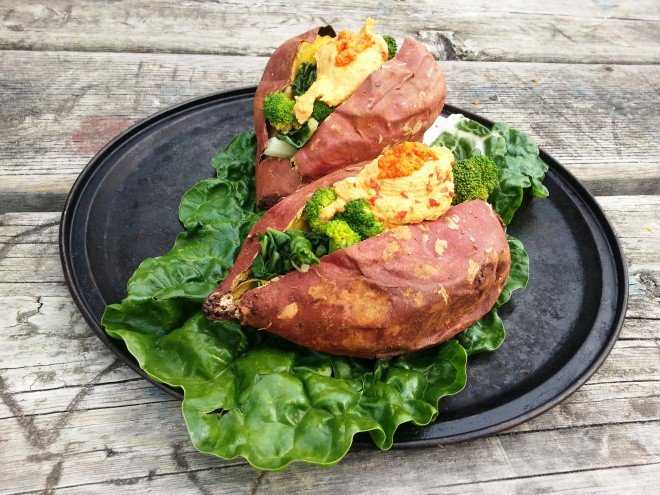BY: EARTHA LOWE
Sweet potatoes, one of the oldest, most delicious vegetables known to man, have gained “superfood” status among healthy eaters and for good reasons! Not only are sweet potatoes naturally sweet – tasting almost like a dessert – they provide some surprising health benefits. Besides being a good source of dietary fibre, which helps the body maintain a healthy digestive tract and regulates digestion, studies have shown the superior ability of sweet potatoes to raise our blood levels of vitamin A. Vitamin A may help to protect against sun damage. There are also the known beauty benefits; vitamins C and E contained in sweet potatoes, encourage healthy, glowing skin and collagen growth. Sweet potatoes are available in many countries, including Canada, on a virtual year-round basis, and their ability to provide us with a key antioxidant like beta-carotene also makes them a standout antioxidant food. They’re worth checking out!
Yams vs Potatoes vs Sweet Potatoes
Let there be no confusion, the true yam is not a sweet potato. A yam is very bland, and when cooked, very dry. It is often used in meaty stews that contain plenty of liquid, wherever you’d use potatoes. Sweet potatoes belong to an entirely different food family than either yams or the common potato, and while potatoes are often lumped into one category, they can actually be quite different in terms of their taste, flavour, texture, and nutrients. Depending upon the variety, of which there are about 400, the skin and flesh of the sweet potato may be almost white, cream, yellow, orange, pink, or deep purple, although white/cream and yellow-orange flesh are most common.
Tips for Buying and Storing
When purchasing sweet potatoes, choose ones that are firm and that do not have any cracks, bruises or soft spots. Avoid those that are displayed in the refrigerated section of the produce department since cold temperature negatively alters their taste. Sweet potatoes should be stored in a cool, dark and well-ventilated place, where they will keep fresh for up to ten days. Keep sweet potatoes loose (not in a plastic bag, but if desired, a brown paper bag with multiple air holes punched in it will work) and away from sources of excess heat (like in a cupboard above the stove).
Brilliant baked, sweet potatoes are also good handled in many of the same ways you would treat white-fleshed common potatoes and winter squash – mashed, roasted, or fried.
Stuffed Baked Sweet Potato with Greens
You’ll need
- 2 large sweet potatoes
- 1 cup broccoli florets
- 1 tablespoon olive oil
- 1 teaspoon freshly grated ginger
- 2 cups tightly packed, chopped callaloo or Swiss chard leaves
- A squeeze of lime juice
- Sea salt, to taste (optional)
- Black pepper (optional)
- Your favorite chickpea hummus!
Directions
- Bake the sweet potatoes for an hour, or until fork tender.
- In a saucepan, heat the olive oil and add the minced ginger, cooking for 1 to 2 minutes. Add the broccoli and sauté for 2 minutes until bright green. Add the chopped callaloo or Swiss chard and lime juice, and cook uncovered for 2 to 3 minutes until leaves are wilted. Add sea salt and black pepper to taste (optional).
- Pile the sweet potatoes high with the cooked greens and hummus and enjoy!
Category: vegan, vegetarian
Preparation and cook time: 1 hour, 15 minutes
Servings: 2
Difficulty: easy!

